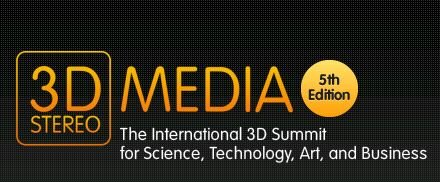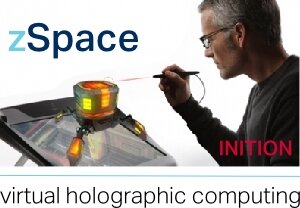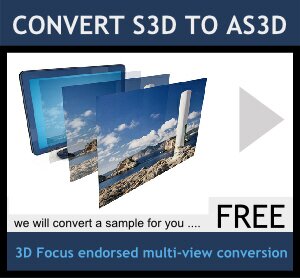Super Hi-Vision Wows Audiences at IBC 2011
Keen to show the world how far Super Hi Vision has progressed, NHK and the BBC presented a live SHV feed from London to Amsterdam during IBC 2011.

Soon after the BBC’s recent announcement that three 15 metre (15 ft) SUPER Hi-VISION screens will be installed around the UK showing live events from the Olympics 2012 games in the ultra-high resolution format, NHK dominated IBC’s ‘Future Zone’ with a glimpse TV’s broadcast future.
SUPER Hi-VISION (also known as Ultra HDTV) is a proposed standard formed by the BBC and NHK as the next stage of television resolution. It is equivalent to 16 X the current HD format (1980 x 1080) used in HD TV broadcasts boasting a resolution of 7,680 × 4,320. NHK first showed the format to the public back in 2003 which required an array of 16 HDTV recorders at the time. Fast forward to 2011 and NHK and the BBC were able to show the public SUPER Hi-VISION clips on an 8K LCD monitor plus a live transmission from London to the RAI in Amsterdam on a 275” theatre screen.

For this ground-breaking public demo, a third generation Ikegami SUPER HI-VISION compact camera (one of only two in the world and pictured above) was mounted on the roof of a building near BBC Television Centre. A Network Adaptor compressed the raw data rate of about 24 gigabits per second to about 260 megabits per second before sending the stream over an IP Network to Amsterdam.
At IBC there were three SUPER Hi-VISION display samples – an 85” 8K Sharp LCD monitor, a smaller 4K monitor displaying the live feed from London and an 8K theatre screen where attendees could watch a 20 minute demo reel. For the theatre presentation, an NHK representative instructed the cameraman in London to zoom into various parts of the scene to illustrate how detailed the image remained during close up shots (If only the people waiting for their bus on Wood Lane knew they were part of television broadcast history!)

The SUPER Hi-VISION cinema presentation was simply breath-taking. The show commenced with the projection of a small SDTV still image of an aeriel view of Amsterdam city (which looked miniscule on the large screen). This was followed by a HDTV screenshot and then the ‘wow’ moment – a native SUPER Hi-VISION image which occupied the entire screen; cue scuffles and mutterings in the audience.
This was followed by an audio demo of 22.2 multichannel sound compared to 5.1 and 7.1 surround sound. The results were incredible. 24 channel audio provided a fully immersive audio sound field, closely replicating how we hear in real life. The first sequence was NASA’s final space shuttle launch. Taken with a single SUPER Hi-VISION camera, the clarity of the image was virtually indescribable and if that same sequence was shown in 3D on a wrap-around screen (perhaps with a few 4D wind effects thrown in), the sense of being there would probably ring true for once. This was followed by a football game filmed in SUPER Hi-VISION of the Copa America football finals held in Agentina. After a while, one did forget that this was a SUPER Hi-VISION demo and several of the audience were reacting to the game as if watching at home or in a pub.

The 8K LCD monitor (pictured above) showed a loop of SUPER Hi-VISION clips including a concert, football match, people chasing a log and a festival. Certain clips worked better than others but some sequences were so good that several people commented on how the clarity of the image almost produced a 3D effect. The 85” monitor, produced in association with Sharp, is the world’s first direct-view display for Ultra HD and featured a Loudspeaker Array Frame built into the display which used 100 different elements to reproduce sound from all different directions creating a feeling of spaciousness..
The SUPER Hi-VISION cameras used for the demo at IBC are the models planned to be in use for next year’s Olympic coverage where three are likely to be deployed to cover track and field, gymnastics and swimming, according Olympic Broadcast Services Chief Executive Manolo Romero, although this might change, as well as the opening and closing ceremonies.
Dr Keichi Kubota, Head of Science & Laboratories at NHK, told 3D Focus TV that NHK have reduced the weight to 20 kilograms for its third iteration compact camera compared to the 80 kilogram weight of the first model. The SUPER Hi-VISION compact camera system is said to have comparable operability to that of a HDTV camera and features 4 x 8 million pixel CMOS sensors.
NHK were also showing some of the other key productions elements in the SUPER Hi-VISION broadcast chain. These included a Live Switcher composed of eight inputs and four outputs carrying Dual-Green SHV signals; a Compression Recorder which can compress SHV into 1.6 Gbits/s signals and can record continuously for two hours or more; a Live Slow Motion System which enables reproduction and highlight editing while recording, a full 8K JVC SHV Compact Projector and a 22.2 multichannel Sound Production System.

SUPER Hi-VISION is more than just about improved picture quality. The format will play an important role in stereoscopic video capture. Earlier in the year, BBC R&D Lead Technologist Oliver Grau told 3D Focus TV that the BBC were investigating how two left and right images could be extrapolated from a single SUPER Hi-VISION camera. Due to the huge resolution on offer, it might also possible for a single SUPER Hi-VISION camera to capture enough data for multiview autostereoscopic displays. SUPER Hi-VISION is also an integral part of NHK’s Science and Technology Laboratory’s experiments into an electro-holography ‘integral photography’ solution that attracted a lot of attention at the NAB trade fair in April 2010. This system is a glasses free 3D solution that does not suffer from the ‘sweet spot’ restrictions of existing parallax barrier and lenticular technology.

NHK are working to deliver Super Hi-Vision as a home solution with plans to do an experiment to deliver a SUPER Hi-VISION via satellite in 2020. Over the next decade, the global IP network will need to have advanced enough to be able to handle a huge increase in data transfer volumes (as well as compression techniques improving) and 8K television sets will need to become affordable (the definition of 'unlimited broadband' might need to be reassessed by ISPs!). Broadcasters will also need a lot of persuading to upgrade their kit again so relatively soon after the expensive upgrade to HD.
The SUPER Hi-VISION system could make the futuristic vision of entire walls in people’s homes becoming one large SHV display which could be used in its entirety for virtual windows to the world or sections for different applications (for example, one could increase the size of the screen to 'movie mode' for when friends visit to watch a film and reduced to TV mode for casual TV viewing and video conferencing).

Some experts are suggesting that SUPER Hi-VISION could succeed 3D in the future. Whilst talking about the BBC’s SUPER Hi-VISION plans for the Olympic coverage, Roger Mosey, the BBC executive in charge of the corporation's London 2012 coverage, said “Super hi-vision might be a better long-term prospect than 3D in some ways as it gives you the feel of being in the stadium. People are knocked out by it.” There was no denying the 3D illusion from the 85” 8K screen at IBC. Also, by the time Super Hi-Vision becomes an affordable reality, it is more than likely that 3D TV wont be based on the current technologies as R&D units and Universities strive towards a goal of true 3D displays akin to the holography technology predicted in the movies (full article about the future of 3D display technology coming soon).
With images being so clear that it’s difficult to differentiate the real thing, cosmetic surgeons and moisturiser companies can expect some boom years to come as actors and presenters are exposed more than they might like!
SUPER HI VISION FACTS
- Research on SUPER Hi-VISION started in 1995 and R&D is progressing toward SHV broadcasts over a 21 GHz band satellite in 2020.
- The first official HD format was the 405 line system introduced by the BBC in 1936.
- The scanning format of SUPER Hi-VISION is 60Hz progressive scanning with a target frame rate of 120Hz by 2020.
- SUPER Hi-VISION has an aspect ratio of 16:9.
- The official SUPER Hi-VISION sound format is known as 22.2 multichannel sound. 22.2 multichannel sound was developed especially for SHV. It uses 24 speakers (including two subwoofers) arranged in three layers. The format has been adopted as an SMPTE standard.
- Earlier this year, Sharp Electronics launched the world’s first 8K LCD display.
- SUPER Hi-VISION has a viewing angle of 100 degrees – the wider viewing angle conveying a stronger sense of a reality.
DID YOU KNOW?
The current HD format dates back to the early 1970s, when Japanese engineers developed the HighVision 1,125-line interlaced TV standard which ran at 60 frames per second PLUS Toshiba will soon be launching a quad HD 3D display. Boasting a resolution of 3,840 x 2,160, Toshiba’s mammoth set offers glasses free 3D viewing using lenticules.
![]()
IBC Page
NHK leaflet
BBC Click video of historic live SUPER Hi-VISION broadcast
FREE WEEKLY 3D NEWS BULLETIN –



















